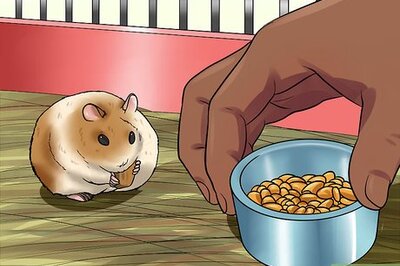
views
New Delhi: An increased awareness about the perils of junk food consumption has brought with it an eating disorder in India’s upwardly mobile fitness fanatics obsessed with healthy eating - orthorexia nervosa is the latest addition to the country’s numerous lifestyle-linked health disorders.
What is Orthorexia nervosa?
The term was introduced in 1997 by Californian Doctor of Medicine Steven Bratman and is intended as a parallel with eating disorder Anorexia nervosa.
Experts say orthorexia is a mental disorder where the individual develops an unhealthy fixation with “healthy eating”.
For orthorexics the list of what to eat and what to avoid is seemingly endless.
Preservatives – check, man-made food additives – check, fatty food – check. According to Bratman, orthorexics are fussy about food produce that have additives or industrial products can be seen as artificial.
Though the term is not included in the latest version of the Diagnostic and Statistical Manual of Mental Disorders used by the American Psychiatric Association, but orthorexia nervosa is slowly gaining a foothold amongst dedicated fitness enthusiasts with reverse eating disorders. Doctors say they are equally at risk as their anorexic cousins.
Orthorexics in Indian metros
How many batter-fried nuggets are too many?
When while eating healthy, orthorexics obsess over the type of food they consume, and not necessary the quantity like anorexics.
Though their numbers are lesser than that in the US, fitness-obsessed Indians in urban areas have added orthorexia to their list of health issues.
The disorder is more difficult to detect here due to the many religious and cultural restrictions on food. While Jains consume only pure vegetarian food, some communities avoid onions and garlic as a part of their diet, some don’t eat animal products, or avoid eggs or certain vegetables.
Disease or Virtue?
Often orthorexic patients disguise their disease as a virtue, Bratman said in his "Health Food Junkies" - a book on the subject.
Orthorexics often push their close ones to the brink of health malfunctions with their fixation. Naturopaths believe that milk is not required by the body for growth and nourishment. However, when deprived of milk, their children experience stunted growth.
Treatment
Long acquainted with usual eating disorders such as anorexia nervosa, where a patient limits eating, bulimia nervosa, characterized by binging and purging, doctors now categorize orthorexia under a third independent group. However, experts believe that many of its symptoms may align it with anorexia.
Experts say, an orthorexic eating disorder could take as long as eight to ten months to cure and in some cases recovery could take as long as a year.
Treatment options remain similar for orthorexia and other eating disorders and, as such, orthorexia doesn't merit a separate category, said Ellen Astrachan-Fletcher, a clinical psychologist and director of the eating disorders clinic at the University of Illinois at Chicago.
Also, there’s a high-level of crossover when it comes to eating disorders, said Astrachan-Fletcher. A bulimic can become anorexic, or vice versa. And during the course of treatment, both anorexics and bulimics move through variations of eating disorders. Along with traditional treatment, orthorexics have known to respond to holistic healing and therapy.




















Comments
0 comment